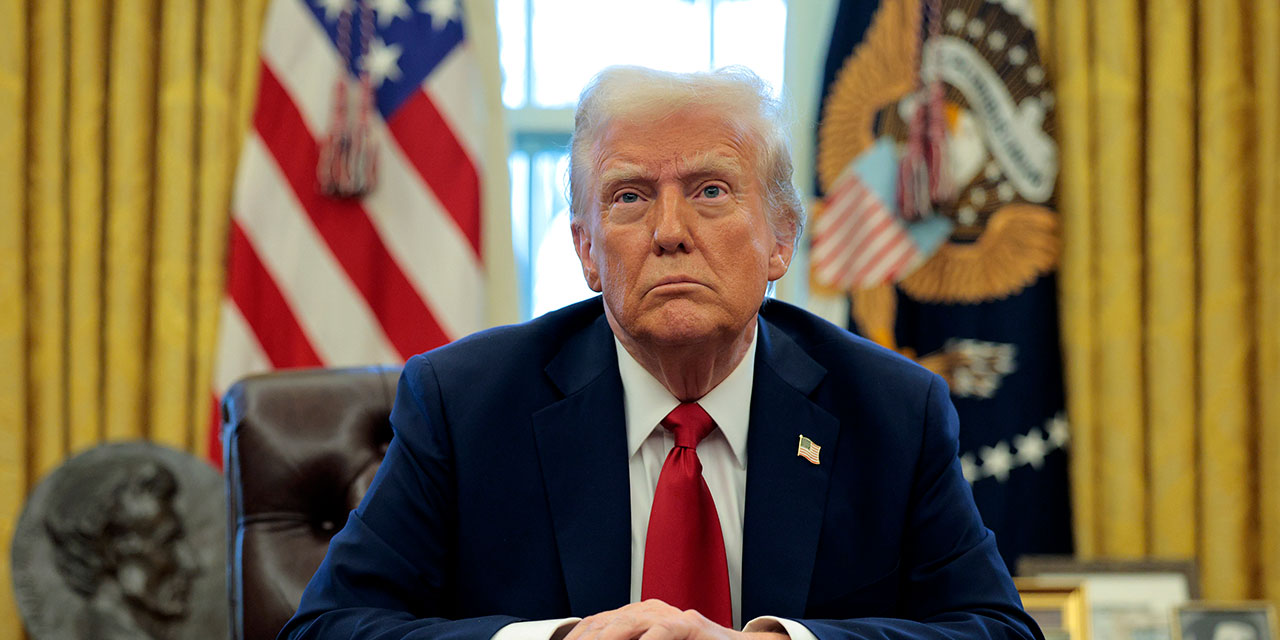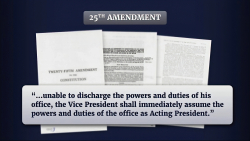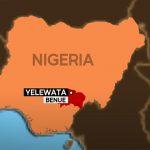
A president ignoring a court order would, according to conventional wisdom, trigger a constitutional crisis. Yet, for all this rhetoric of warning, President Donald Trump has never come close to suggesting that he would take such a step. Nor have his lawyers, who have at times approached the line but never crossed it. In fact, the president and his administration have shown notable restraint and respect for the judiciary’s role in a constitutional system of separated powers.
Whether the courts have reciprocated is another matter. Lower courts—typically district or circuit courts in more liberal jurisdictions—have gone to extraordinary lengths to block the new administration’s policies before they can take effect. They have done so by issuing problematic injunctions, and particularly “nationwide” injunctions that prohibit enforcement of executive actions or statutes not just against the plaintiffs but against all potential parties.
Finally, a reason to check your email.
Sign up for our free newsletter today.
According to a Harvard Law Review study, only 31 nationwide injunctions were issued against administration policies between 1963 and 2001. During the George W. Bush administration, judges blocked a total of six policies: three by Democratic appointees, three by Republican ones. The number doubled under the Obama administration, rising to 12, with just over half issued by judges appointed by Republican presidents.
Then came the first Trump presidency. Over his four years in office, 64 injunctions were issued against his policies—59 of them by Democratic-appointed judges. The Biden administration marked a return to relative normalcy: 14 injunctions were issued through 2023, albeit all by Republican-appointed judges. Though estimates vary, some observers suggest that in the early months of Trump’s second term, judges have issued temporary or preliminary injunctions in nearly 80 cases—far surpassing anything seen before.
Some of this increase can undoubtedly be attributed to the rise of government-by-executive—but not all of it. The current clash between Trump and the courts raises a series of deeper questions: What is judicial power? What is the proper role of the courts? And may a president ever ignore a judicial order?
Respect is a two-way street. The president must respect the courts and cannot ignore a judicial order simply because he believes it was wrongly decided. But the courts, in turn, must respect the executive. That respect is shown by issuing orders only when they have jurisdiction—jurisdiction being the source of their authority to resolve cases and interpret the law. Courts are not roving commissions empowered to issue binding pronouncements on the legality of government policies. Injunctions issued without proper parties or in the absence of proper causes of action violate this core principle. Nationwide injunctions are especially problematic. When a court enjoins a policy nationwide—applying its order to all persons, including those not before the court, and especially before the policy takes effect—it crosses the line between judicial and executive power.
As this essay went to press, the Supreme Court ruled that universal injunctions likely violate the Judiciary Act of 1789. Even if the Court ultimately reins in these injunctions, lower courts may continue to exploit other tools—such as expansive class actions and permissive state-standing doctrines—to obstruct Trump policies. And they may continue to ignore other fundamental principles limiting judicial power. If the courts persist in issuing improper injunctions, and particularly universal injunctions or their functional equivalents, at the present pace, the real constitutional crisis will have arrived.
The president may not defy a lawful court order simply because he disagrees with it. But neither must he treat every judicial pronouncement as an eternal and universal command. A court’s ruling settles the dispute before it; it does not bind the executive branch in every future context or override its duty to interpret and execute the law. The president’s obligation to follow the law includes respecting judicial decisions—but also exercising independent judgment where the courts have not spoken or where their jurisdiction does not reach.
That is how Abraham Lincoln responded to the Supreme Court’s decision in Dred Scott v. Sandford, which, among its other errors, held that free persons of African descent were not and could never be citizens of the United States. Justice Benjamin Curtis’s dissent laid bare the gravity of this mistake. Free black Americans were citizens of at least five states before the Constitution was adopted; they were part of the political community that created it; and nothing in the Constitution stripped them or their descendants of that citizenship.
Lincoln argued that the Court was wrong and that its decision should not be followed. Stephen Douglas accused him of embracing mob law. Douglas insisted that the Constitution “created the Supreme Court for the purpose of deciding all disputed questions touching the true construction of that instrument, and when such decisions are pronounced, they are the law of the land, binding on every good citizen.”
Lincoln defended his position by explaining the two purposes of judicial decisions: first, to settle the rights of the parties in a given case; second, to serve as precedent for future cases. He did not advocate resisting the judgment in Dred Scott itself. Rather, he challenged Douglas’s claim that questioning the decision amounted to lawlessness. Douglas, Lincoln said, “denounces all who question the correctness of that decision as offering violent resistance to it. But who resists it? Who has, in spite of the decision, declared Dred Scott free, and resisted the authority of his master over him?”
Even if the Court’s decision was erroneous, it was a genuine exercise of judicial power: the Court decided a concrete “case” or “controversy” arising under the laws of the United States. The Court had jurisdiction, or authority, to decide the case under Article III of the Constitution. What Lincoln disputed was that the Court’s decision must be treated as a political rule.
Thus, Lincoln abided by the judgment in Dred Scott but not its interpretation of the law. When faced with decisions about issuing passports or coasting licenses—reserved for “citizens of the United States”—he granted them to free African Americans. Later, when the reconstructed Mississippi legislature appointed Hiram Revels as the first African American senator, he would not have met the Constitution’s nine-year citizenship requirement if Chief Justice Taney’s opinion in Dred Scott were treated as binding. The Senate seated him anyway.
Lincoln once came close to ignoring a court “order.” At the start of the Civil War, before Congress could convene an emergency session, he authorized his generals to suspend the writ of habeas corpus. One of them, General George Cadwalader, did so along the Baltimore rail lines and arrested John Merryman, a Maryland seditionist likely involved in sabotage. Merryman was committed to Fort McHenry but managed—through counsel—to petition for a writ of habeas corpus from none other than Chief Justice Roger Taney, acting in his capacity as circuit judge for Maryland.
The Lincoln administration did not appear in court to defend its actions. Taney nevertheless issued an opinion declaring the suspension of habeas corpus unconstitutional. The merits were complex. The suspension clause appears in Article I, Section 9 of the Constitution and is framed as a limitation on Congress, suggesting that only Congress holds the suspension power. But Congress was not in session, and its members needed the rail lines to reach Washington. One could argue that Lincoln had a limited authority to suspend the writ temporarily to enable Congress to convene—leaving the ultimate decision to the legislature. (That rationale, however, would not justify Lincoln’s broader suspension of habeas corpus in 1862 during early draft riots.)
Lincoln came perilously close to ignoring Taney’s order. His attorney general, Edward Bates, issued an opinion arguing that Taney lacked jurisdiction because the matter was a “political question.” The political question doctrine is technical. It does not mean that courts must avoid politically charged issues; many legal questions are inherently political. Instead, the doctrine holds that some matters are constitutionally entrusted to the political branches and fall outside the scope of judicial authority.
The doctrine applies, for example, when no judicially manageable or discoverable standard exists, or when a matter requires deference to a decision initially committed to the political branches. In its most famous application of the doctrine, Luther v. Borden (1849), which arose from the Dorr Rebellion in Rhode Island, the Court held that it lacked the authority to decide which government in Rhode Island was legitimate. What legal standard could possibly resolve such a question? And how could the courts overturn the president’s decision to call forth the militia in support of the state’s charter government?
Whether Taney was right or wrong on the merits, it is far from clear that Lincoln’s suspension of habeas corpus qualified as a political question in the doctrine’s narrow, technical sense. Still, Bates’s opinion implied that it would be improper for the Court to intervene in matters beyond its jurisdiction—and pointed to a corollary: that the president could disregard an order issued by a court that lacked jurisdiction.
Though that proposition may seem shocking, it is plainly correct in at least some cases. No one would claim that the president must heed an “opinion” issued by a district judge with no parties before the court. Taney famously drafted an opinion declaring conscription unconstitutional but never issued it because no case brought the matter before him. Would anyone seriously argue that Lincoln would have been bound to obey Taney’s musings had he chosen to publish them anyway?
The issue grows thornier when both sides can make a plausible case on jurisdiction. Who has the final say: a court, or the president? There is no clear answer. Better not to force the question. Lincoln quietly released John Merryman.
Today, we might come close to testing the answer to that question—not because Trump wants to do so but because the courts may force his hand. In 1861, Lincoln stood down. This time, it should be the courts (largely) that do so. The widespread use and abuse of injunctions, and particularly of nationwide injunctions or similar mechanisms like class actions and expansive state standing, have distorted the Constitution’s original design.
Allowing courts to issue nationwide injunctions or similarly broad relief—beyond resolving concrete cases and controversies between actual parties—turns them into a standing council of revision over the general administration of government. The Framers rejected such a council, where judges would assess the constitutionality of legislation without a live case. They never envisioned judges acting as overseers of the executive branch, issuing ongoing judgments about its policies.
More specifically, three features of modern injunctions make them especially problematic—particularly in their use against the Trump administration. First, many have been improper on basic grounds: injunctions, even when limited to the parties, are impermissible when an adequate remedy at law exists or in the absence of a legal injury to prevent. Second, even if an injunction is otherwise justified, applying it to nonparties through a nationwide or universal scope is not. Third, such sweeping injunctions are especially troubling when issued in a pre-enforcement posture. It is this combination—pre-enforcement universal injunctions, particularly in cases where injunctive relief is unwarranted—that risks triggering a constitutional crisis.
Even if the Supreme Court ultimately curbs the use of nationwide scope, the other defects remain. And lower courts are unlikely to relent, so long as other “universal” tools remain at their disposal.
The first problem with modern injunctions is that issuing courts have disregarded the black-letter law of remedies and causes of action.
Every law student learns that injunctions, as equitable relief, are available only when legal remedies are inadequate—typically meaning that the plaintiff would suffer irreparable harm without the injunction. If monetary damages are sufficient, a legal remedy exists, and equitable relief is inappropriate.
Thus, the various injunctions ordering the reinstatement of probationary employees, members of the Merit Systems Protection Board, Special Counsel Hampton Dellinger, and removed members of the National Labor Relations Board are all improper. The leading removal-power cases—Myers v. United States, Humphrey’s Executor v. United States, Wiener v. United States, and United States v. Perkins—were all salary suits. If officials are unlawfully removed, the proper remedy is back pay through the Court of Claims, not reinstatement by injunction. Fortunately, the Supreme Court and U.S. Court of Appeals for the D.C. Circuit have temporarily halted some of these injunctions.
Another legal remedy is the writ of habeas corpus. As long as that remedy remains available—for instance, to individuals designated as enemy aliens—it is inappropriate to issue an injunction barring all enforcement under the Alien Enemies Act. When a legal remedy is adequate, injunctive relief is improper. (Some have questioned whether habeas corpus remains meaningfully available to those both removed from the country and imprisoned abroad.)
Injunctions, especially preliminary ones, are also meant to preserve the status quo. Yet several recent injunctions have ordered the administration to spend funds that it would be unlikely to recover if it ultimately prevailed on the merits. In such cases, the injunctions have not prevented irreparable harm but created the risk of it—this time for the government.
Finally, injunctions can be issued only to prevent legally cognizable injuries. There is no free-floating right to run to a federal district court to get an injunction ordering the president to stop taking some action a judge believes to be unlawful. And yet California governor Gavin Newsom recently did just that: he obtained an injunction from a San Francisco federal judge ordering President Trump to return to the governor control of a few thousand National Guard troops that the president had federalized.
Yet Newsom had no cause of action. He experienced no legal injury or threatened legal injury that an injunction could have prevented. Federalizing the National Guard did not result in a tort being committed against the governor. There was no breach of contract to adjudicate. No other legal cause of action applied that a suit for injunction might have remedied. And no statute conferred a cause of action allowing the governor to sue over the federalization of the Guard.
Historically, judges could adjudicate the legality of such actions only if a private party suffered a legal injury, such as if a guardsman had committed, pursuant to presidential orders, what otherwise would be a trespass or battery. There is little issue with federal judges adjudicating many such cases: the private parties are remedied, the judges declare in the course of their decisions their opinions about the president’s actions, but ultimately the president remains commander-in-chief.
This original separation of powers makes eminent sense. Suppose dozens of other federal district judges would have sustained the president’s decision to federalize the Guard. Why should a single San Francisco judge get to play commander-in-chief?
Injunctions were traditionally confined to the parties in a case. It was not until the 1960s that courts began issuing what have come to be known as nationwide, universal—or even “cosmic”—injunctions.
Injunctions typically follow the parties, not geography. The issue with “nationwide” or “universal” injunctions is not how far they reach in space, but whom they reach in scope. These orders attempt to dictate how the executive must treat individuals who were never before the court. Instead of prohibiting enforcement of a policy against the plaintiffs actually involved, they command: “the administration must stop enforcing policy X” against everyone, everywhere.
When a court orders the executive to treat nonparties in a particular way, it exceeds its jurisdiction. Such an order is not a true exercise of judicial power. It denies the executive the freedom to apply its own view of the law in future cases and effectively transforms the court’s ruling into a binding political rule—applicable everywhere, to everyone.
If it is inappropriate for the Supreme Court to issue such sweeping orders, it is even more so for any one of more than 600 district judges. Opponents of the administration need only find a single judge willing to rule in their favor. A dozen others might uphold the policy, but one can block it nationwide. These injunctions encourage forum-shopping and short-circuit the normal process by which legal issues develop through competing lower-court rulings—precisely the kind of judicial percolation from which the Supreme Court benefits.
Putting aside the remedial section of the Administrative Procedure Act—long debated by scholars—no statute grants judges the authority to issue injunctions binding nonparties. It’s also unclear whether Congress could enact such a statute, as it would appear to vest courts with powers beyond the judicial.
Nor is there meaningful historical precedent. As Sam Bray explains in a pathbreaking Harvard Law Review article, the English Chancellor—head of the equity courts—could issue a “bill of peace” to resolve disputes involving one private party and many others, such as a feudal landlord and his tenants. The bill, a forerunner of the modern class action, was designed to avoid a multiplicity of suits and bring finality for the defendant. But it offers no precedent for a “universal” injunction against the government, especially where no class-action mechanism is used.
There is also reason to doubt that the class-action mechanism can properly be used to block administration policies, as opposed to remedying harms caused by the government acting as an ordinary tortfeasor. Bills of peace have existed for centuries, yet no one believed such a device appropriate to halt President Franklin D. Roosevelt’s unconstitutional Agricultural Adjustment Act. Instead, as Bray notes, 1,600 separate injunctions were issued against the law. This history casts serious doubt on the Supreme Court’s recent decision, issued the day after oral argument in the universal injunctions case, effectively granting a temporary restraining order and preliminary injunction to a putative class of Tren de Aragua members under the class-action mechanism.
Pre-enforcement injunctions were once rare. Regulated parties typically had to wait for enforcement before challenging a law. Pre-enforcement relief was available only when delay would cause irreparable harm, such as risking a lengthy prison term.
That changed in Abbott Laboratories v. Gardner (1967), when the Court allowed drugmakers to challenge a labeling rule preemptively. The compliance costs were high, as were the penalties for noncompliance. Justice Abraham Fortas warned in dissent: “Federal injunctions will now threaten programs of vast importance to the public welfare.” It’s unlikely, he added, “that some federal judge somewhere will not be moved . . . to grant a disruptive injunction.”
Of the three problematic features of modern injunctions, the pre-enforcement kind is the least troubling. Such injunctions have long had a place in the legal system. And for opponents of administrative overreach, it is cold comfort when a court strikes down an unlawful policy only after the industry has already complied. But when paired with universal scope—especially in cases where injunctive relief is unwarranted—pre-enforcement injunctions gain a far more disruptive power. They can halt a new presidential administration before it even gets off the ground.
Legislative solutions might resolve the impending constitutional crisis. One is to bring back three-judge district courts. A majority of three judges would have to agree that a federal law was unconstitutional or that an executive order was unlawful. The panel could be randomly drawn from judges throughout the nation to prevent forum-shopping. That would not make universal injunctions appropriate exercises of judicial power, but such a framework would take some of the sting out of their issuance.
Meantime, judges should stay in their lane. President Trump has so far stayed in his.
Photo: Lower courts have gone to extraordinary lengths to block many of President Trump’s signature policies before they could take effect. (Chip Somodevilla/Getty Images)
Source link
















